From the November 1, 2011, performance of Rat Shed Radio, held at Homegrown Press. Other Rat Shed Radio paddles can be found here: Fayette floaters and the Fabled Canelands.
I moved here in 2000 for the state university located just south of downtown Lexington, but I stayed because of Jessamine County. Where Lexington and UK initially came off to me, arriving fresh off stints in Charleston, SC; Missoula, MT; and Athens, GA, as a sort of familiar letdown, the city equivalent of ambien and bourbon, it was my travels to Wilmore and High Bridge, Keene and Camp Nelson, that first fired my imagination and wonder for this place and the people calling it home. In Jessamine, I encountered guitar pickers who enjoyed playing through dawn in cold damp tobacco barns; suburban yard salers dabbling in E-Bay Porsche sales; radically anti-christian Asbury graduates; one-armed retards; serial masturbators; naturalists; drunks; pill-poppers; artists; ruffians; river rats; walkers; poets; paddlers; farmers; and other good and neer do wells. To this day, I trace most of my close friends to that county.
So pardon the intimate nature of this Rat Shed paddle through Jessamine County, these true accounts, playful stories and clear reflections of our lives traversing this place.
Danny
Downstream naked
This reading is taken from the first Kentucky River narrative appearing in North of Center, a 2-parter by Troy that goes so far back we can only link you to pdf’s of the 2 issues.We’ve gotten better at portages since the one recounted here at Lock 8, a mostly abandoned grounds located between Valley View and Camp Nelson, but nothing’s quite matched this one for visual effect.
Close listeners will note our homage to the Last Waltz. Troy’s account opened our live show, but during the production process it got moved. We offer it here in its proper Jessamine County context. Wes, per usual, accompanies with an original flood song.
Cincinnati arches and New Orleans sidewalks
Take Nicholasville Road south past the suburban sprawl, and you’ll eventually cross the Kentucky River at Camp Nelson. Now mostly invisible to car-goers, this section of the river once bustled with cargo destined for New Orleans ports and European markets. Here’s Northrupp giving a little more on that history, followed by Warren Byrom, one of many Kentuckians whose life has been moved by the city beneath the sea, singing about sidewalk kings and old lovers becoming tourists again.
The ballad of John Robert Shaw
John Robert (JR) Shaw, an English transplant who fought for both the British and Colonial army during the Revolutionary War, was an early arrival to the Jessamine and Garrard County banks of the Kentucky River and rumored descendant of Gortimer T. Spotts (by way of a bastard line of offspring). Shaw’s skill at frolicking along the Kentucky’s banks while tinkering away diligently at odd jobs has provided modern river rats a suitable historic role model. His visage looms large in this story of a paddle from Camp Nelson to Jessamine Creek. Chris Sullivan accompanies with a cover of Johnny Cash’s “Big River” that could cure even John Robert’s bottle fever.
Night falls on the Jessamine
Night paddles on the Kentucky River always seem to contain their own magic and mystery. In this continuing saga of Gortimer T. Spotts and Northrupp Center, the two leave the comforts of a Jessamine Creek camp for a qat-filled night on the mainstem. Darkness and interstellar travel ensue, with Warren Byrom providing a dream rendition of “Just a lazy river.”
A pointillist’s pallet
I never met Wes Houp—author, speaker, picker and singer of this final Rat Shed piece—until after the near-decade stint he and Laura spent living along the Kentucky River at the palisaded edge of High Bridge. My glimpses into that place and time in the Kentucky world instead came through stories told amongst friends in the Houp stripping room, on latter-day paddles past current-dumb farm-trout on the Dix, and in some river-bottom-era songs that were coming back out to me a decade later during Wes’s country blues phase.
An under-appreciated thing about writing, but also with music, is the way it provides a sort of thumbprint to different stages of life. Whatever future they may predict, stories and songs are essentially documents, public ones, of our place in some up-river past.
In this last piece, written an entire era after he had traded High Bridge river-ratdom for a teaching gig in Murfreesboro, Tennessee, Wes recounts an early spring day spent on and near the Kentucky. The accompanying song, which I first heard while sharecropping the Houp home-garden in Wilmore in 2004 and always called “Big Canoe,” was written during the river years and is really called “A Number One.” Both story and song document a time when being young and otherworldly on the river at High Bridge with a bottle of wine and you’re special friend seemed not only natural, but eternal.
In a stroke of dumb luck, the original version of this Jessamine County story of love and wonder appears in one of my own thumbprints, a front page chronicle of my daughter’s birth. If you listen closely, you’ll see that Josie returns the favor, marking Wes’s performance this night with her own six-months-young vocal thumbprint.
[Editor’s note: The first 25 seconds of the recording reference the previous story by Northrupp Center.]

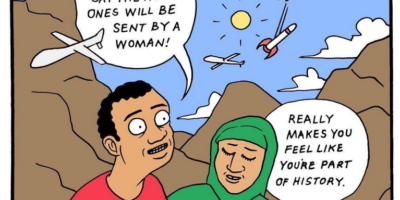
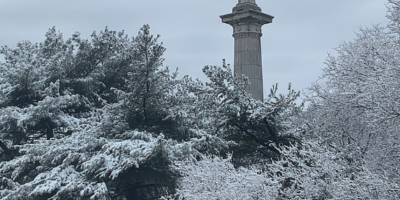
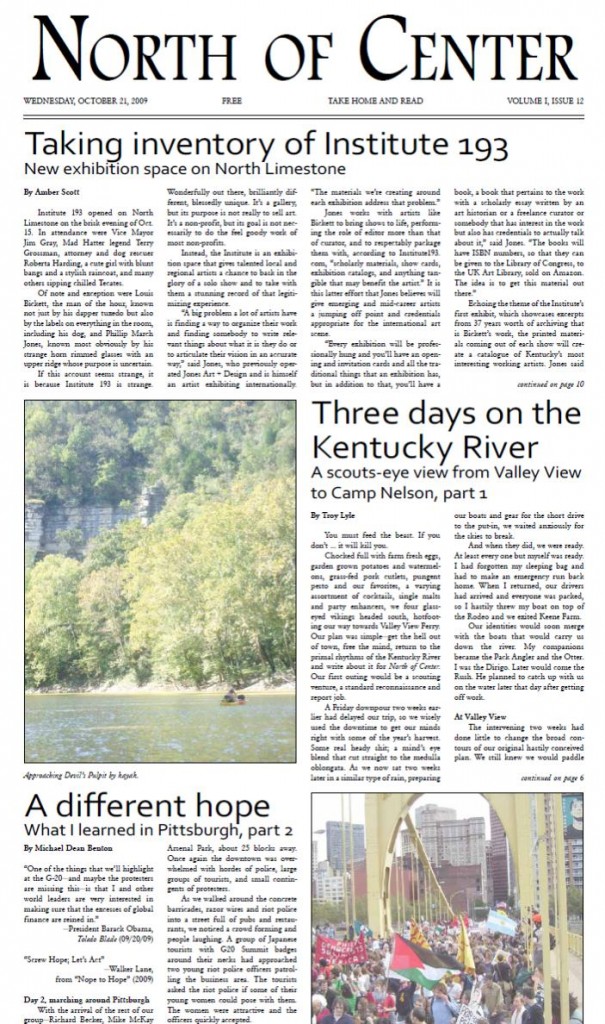
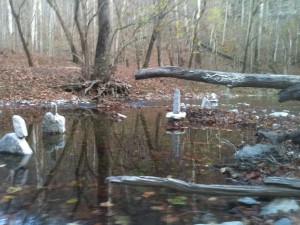
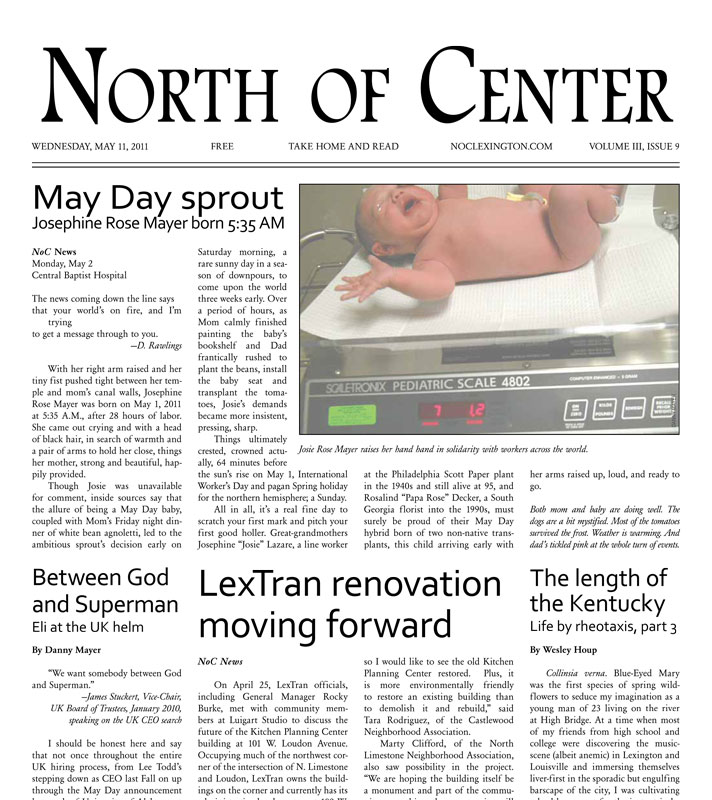
Leave a Reply